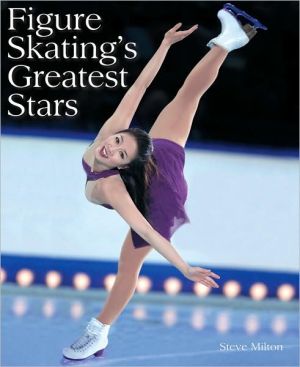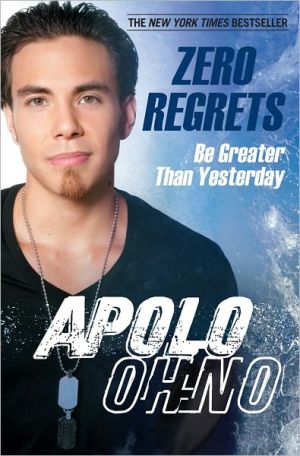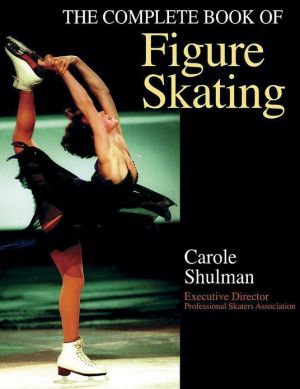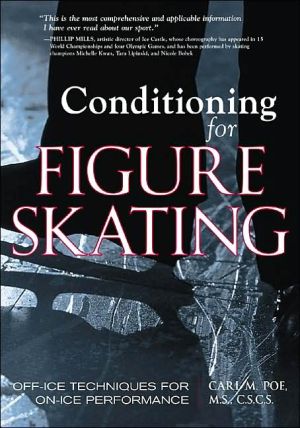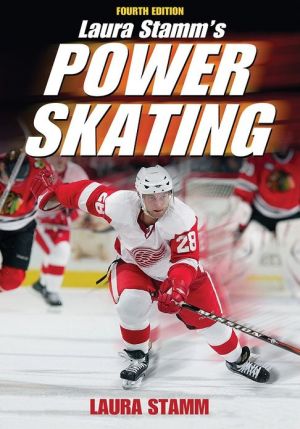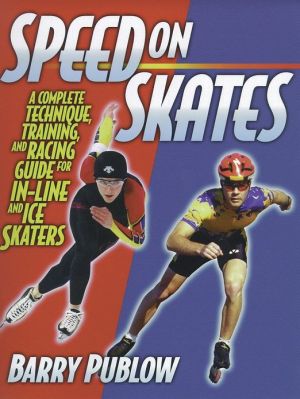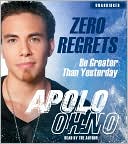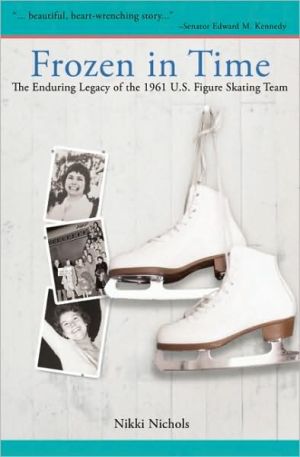Figure Skating's Greatest Stars
A beautifully illustrated celebration of the best athletes from this wildly popular sport.\ Figure Skating's Greatest Stars profiles 60 great skaters, including champions in men's, women's, pairs and ice dancing. Informative essays describe their careers and championship moments, as well as the definitive events that have made figure skating one of the leading spectator sports in North America.\ Fans of all ages will delight in reading the stories of these stars who have jumped higher, spun...
Search in google:
A beautifully illustrated celebration of the best athletes from this widly popular sport. VOYA Milton's book divides sixty-three biographical essays among five chapters. The biographical chapters are interspersed with those of topical note. "Figures and 6.0," covers the end of skating's compulsory figures and the demise of the 6.0 scoring system; "Nationalism and the Building of Champions" addresses the sometimes uncomfortable marriage of figure skating—like so many sports—to the political realm; and "Pivotal Moments" addresses topics such as the introduction of women and the influence of television. Milton dominates the genre and has published more than ten biographies on figure skating since 1994. No other author even comes close. Printed on slick, heavy paper, this oversized title seems to suffer from psychosis: it plays at the fringes of information for research wrapped in a coffee table ornament. Milton touches on hot-button issues such as inequitable scoring, the Harding-Kerrigan debacle, and Dorothy Hamill's depression, but without much depth. The index, which includes only names, makes the book's objective clear: its focus, as says the title, is the sport's stars. Fair enough. Here it succeeds, and interested fans will find considerable and highly readable information in a friendly format. Older fans and researchers will no doubt have tougher questions, however. Nowhere does Milton speak to drugs—do they tempt competitors? What did Rudy Galindo's brave coming-out do for the sport? Do parallels of the unremitting stress of the tennis circuit exist in figure skating? With his considerable expertise, Milton almost certainly has something to say about these topics. Let's hope his next book does. Reviewer: Lauri J. Vaughan
Excerpt\ Greatest Stars and Leading Legends\ How does a figure skater become one of that elite group of athletes recognized around the world as a "greatest star"? There is no specific blueprint, no foolproof plan that works for everybody and the criteria for greatness has changed over time. Figure skating has always been an uneasy blend of science and art; of athleticism and aesthetics; of purposeful power and elegant ease; of the feminine and the masculine; of apparent abandon and disguised restraint; and of the East and the West. It is because of these inherent contrasts that it is difficult to distinguish what separates a star performer from the rest of the herd. It is also because of these contrasts that figure skating is one of the most fascinating of all athletic pursuits.\ The title "greatest star," as it applies to the figure skaters covered on these pages, has been bestowed by the author. This book tracks figure skating history through the athletes who were, and are, most responsible for the direction the sport has taken. So, a skater's impact on the sport was a major factor in awarding him or her the delineation as a "star."\ Compared to other major sports, figure skating has not yet enjoyed the same level of sustained celebration of the men and women who have made the sport what it is. The World Figure Skating Hall of Fame in Colorado Springs has been the leader in recording and publicizing the history and glory -- and some of the warts -- of the sport, but figure skating writers and broadcasters tend to deal with current events, and make little reference to the history of the sport.\ Other sports have been much better served. Millions of North Americans are aware that Abner Doubleday is the accepted founder of baseball, that Ty Cobb was its earliest mega-star, that Babe Ruth was its defining and history-altering player and that Mickey Mantle was its post-war face. Skating, however, though more than a century and a half has passed since Jackson Haines turned a pastime into a sport and spectacle, still lacks the basic public awareness of its history. And, although the general public may not be aware of it, skating has its own Doubledays, Cobbs, Ruths, and Mantles in Haines, Gillis Grafström, Sonja Henie and (take your pick) Dick Button or Peggy Fleming.\ It was a wrenching process to separate the 63 skaters and pairs who made it into this book from the other magnificent athletes who skated in the various eras. For that reason, those selected have not been ordered from 1 to 63. As John Updike famously wrote of transcendent athletes, "Gods don't answer letters" and in the same vein, these Legends don't need registration numbers.\ All the exceptional skaters featured in this book have entered the wider public consciousness in one manner or another: by their remarkable stretch of dominance; by their pioneering style; by their technical innovation; by their impact on a major skating country; by their sustained influence within their discipline; by their roles as signposts of a new era; by their ability to compel others to take up the sport; and by their personification of the skating ideals of their time. And all are worthy of legendary status.\ What is often most striking about any catalogue of "greatest stars" that spans many eras are those who are left off the list. The exclusions tend to generate as much criticism and debate as the selections do. Athletes the likes of Willy Böckl, Ronnie Robertson, Vladimir Kovalev, the incomparably exciting and funny Isabelle Brasseur and Lloyd Eisler; as well as pre-World War II pioneers like Cecilia Colledge and Megan Taylor, and young champions from the turbulent 1990s like Alexei Urmanov, Ilia Kulik, Oksana Baiul and Tara Lipinski, were all tremendous skaters worthy of the praise and championships they won. But, for reasons ranging from being just one of many superb skaters in a very deep field of great skaters, or to careers that were prematurely ended, these athletes were left off the list.\ And even though victory is the ultimate goal in all competition, and most of the greatest stars presented here (and many of the names above) have been world and/or Olympic champions, some haven't. Jackson Haines predated major skating tournaments, but international competition started because of him. Toller Cranston never finished higher than third on the big-time international stage, but there can be no disputing that he has had the most enduring stylistic impact of his, and perhaps of any, generation.\ Werner Groebli and Hansruedi Mauch were unknown by their given names, but as Frick and Frack, they motivated thousands of youngsters to take up figure skating,\ including many who later became world champions. They did this by being part of a legion of professional skaters during the 1940s-to-1960s era of touring shows. Other long-touring pros such as Richard Dwyer, Freddie Trenkler and dancers Rona and Cliff Thaell also spread the gospel to the furthest corners of two continents. But Frick and Frack were the ones who entered the North American lexicon.\ And the mere mention of Janet Lynn, whose best world finish was second, still evokes the image of what chief rival, and fellow legend Karen Magnussen refers to as "ethereal skating." Magnussen and Beatrix Schuba regularly beat Lynn, but Lynn's heartbreaking style prompted young Americans to stampede to their local arenas to see if they could glide across the ice like her.\ In all sports, stars are born at the convergence of opportunity and ability. There is a similarity between the indomitable character traits of the Greats in one era to those of another era. In figure skating, there has been a remarkable chain of personal inspiration from one star to another. The audience that watched Jackson Haines in the 1860s included those who became the champions of the first international competitions two decades later. Their audience, in turn, included the first formal world champions. Sonja Henie's tours inspired a number of future North American stars who, after meeting her in person, further committed themselves to the sport. Carol Heiss recalls being at the Dartmouth Winter Carnival as a nine-year-old when Barbara Ann Scott presented Heiss and her sister Nancy with lapel pins in the shape of tiny silver blades. Those pins proved to be symbolic relay batons: Heiss herself met other future champions at rinkside at local carnivals she skated. Donald Jackson, the world's first triple Lutzer, saw Scott skate live and himself passed the torch to Axel king Brian Orser, a nine-year old soloist sharing a dressing room with Jackson at the 1971 Midland Skating Club carnival.\ There have been countless other such moments of pivotal personal contact, but their frequency and impact are lessening. In the current big-money era, it is very rare for a young skater to meet a star in a local club show. The skating muse is now most-commonly transferred via television. It may be less intimate, but it also reaches a larger pool of potential superstars.\ Woven around the 62 biographies of these greatest stars are essays and sidebars that analyze some of the most important themes and moments in skating's history. They provide the wider context for the individual skaters.\ Decade after decade skating fans have celebrated the best and brightest that the worlds' skating nations have had to offer. I hope you will enjoy this tribute to skating's heritage and that it will help you to appreciate the next groundbreaking routine, the next genre-altering moment and the next legendary performance. Looking back gives us the understanding to move forward.\ Steve Milton
Table of ContentsGreatest Stars and Leading Legends The Men Figures and 6.0 The Women Nationalism and the Building of Champions The Pairs Pivotal Moments The Dancers Legends in the Making Acknowledgments Further Reading Credits Index
\ American Reference Books Annual - Shannon Graff Hysell\ Enjoyable to browse or read cover-to-cover. Everything from the earliest days of tracing figures on frozen ponds to the up-and-coming stars of tomorrow are featured here. The photographs found here, many of which are unique to this volume, fit the text well and the show the progression of the sport. Because there are so few reference titles available on this topic this would be a good addition to the reference section of larger public libraries. Some libraries may find it fits better in the circulating reference collection, however, where patrons can enjoy it at their leisure.\ \ \ \ \ \ Canadian GeographicFans of all ages will delight in the stories of the stars who have jumped higher, spun tighter and skated more gracefully as they pushed skating's artistic and technical boundaries. A beautifully illustrated celebration of the best athletes from a wildly popular sport, this new book profiles 60 great skaters, including champions in men's, women's, pairs and ice dancing.\ \ \ \ Georgia StraightHamilton Spectator columnist Steve Milton has written a lively and authoritative history of figure skating, including profiles of 63 star athletes. This lushly illustrated new book shows how women such as Sonja Henie, Barbara Ann Scott, Peggy Fleming, Midori Ito, Kristi Yamaguchi, Katarina Witt, Michelle Kwan, and Irina Slutskaya contributed to the evolution of the sport, which has become one of the marquee events of the Winter Games. Milton demonstrates how North Vancouver's silver-medal-winning Karen Magnussen has not received enough recognition for her innovations, which included the first layover camel and a spiral sequence that later became a requirement of the short program. "She was the first woman to do the splits in both directions, the first to proceed from an Ina Bauer into a double Axel and the first to do a side layback into a back layback," he writes. As the preceding sentence shows, Milton knows his figure skating.\ \ \ \ \ \ Globe and MailDouble-page illustrations give plenty of scope for expressive drawings, brightened with cheerful watercolor washes. This small-scale story is fitting for children whose play involves the imagined adventures of their favorite toys.\ \ \ \ \ \ Good TimesIf you didn't get your fill of figure skating during the Olympics, don't despair--this book is for you!\ \ \ \ \ \ Huntsville ForesterThis large-format hardcover is beautifully illustrated with historic photos of the sport's legends.\ \ \ \ \ \ SciTech Book NewsMilton, a sports journalist who has covered figure skating for three decades, profiles 63 figure skaters in men's and women's singles, pairs, and ice dancing, including pioneers, legends, influential skaters, technical innnovators, and current stars. Accompanied by color photos, the profiles give information on skaters like Dick Button, Brian Boitano, Sonja Henie, Michelle Kwan, Katarina Witt, Gordeeva and Grinkov, Shen and Zhao, Torvill and dean, Brian Joubert, Carol Heiss, and Kristi Yamaguchi. Sidebars discuss important themes and moments in skatin'g history, like the judging system, nationalism, and the Nancy Kerrigan incident.\ \ \ \ \ \ Waterloo Region RecordA sports writer with the Hamilton Spectator, Steve Milton has attended seven Winter Olympics and more than a dozen World Figure Skating Championships. In this book [Milton] profiles more than 60 world champions, past and present, from all over the world, in the process telling the history of the sport.\ \ \ \ \ \ World Figure Skating Museum & Hall of FameSteve Milton's book is simply wonderful. Figure Skating's Greatest Stars is more than a comprehensive look at the greatest skaters the world has ever seen--it is a refreshing narrative on skating's past, present and future. This book is a must for all skating fans, regardless of age.\ \ \ \ \ \ Frontenac This Week/Kingston This WeekSteve Milton has created a beautifully illustrated celebration of the best athletes from this wildly popular sport.... Fans of all ages will delight in reading the stories of these stars who have jumped higher, spun tighter and skated more gracefully as they pushed skating's artistic and technical boundaries.\ \ \ \ \ \ VOYAMilton's book divides sixty-three biographical essays among five chapters. The biographical chapters are interspersed with those of topical note. "Figures and 6.0," covers the end of skating's compulsory figures and the demise of the 6.0 scoring system; "Nationalism and the Building of Champions" addresses the sometimes uncomfortable marriage of figure skating—like so many sports—to the political realm; and "Pivotal Moments" addresses topics such as the introduction of women and the influence of television. Milton dominates the genre and has published more than ten biographies on figure skating since 1994. No other author even comes close. Printed on slick, heavy paper, this oversized title seems to suffer from psychosis: it plays at the fringes of information for research wrapped in a coffee table ornament. Milton touches on hot-button issues such as inequitable scoring, the Harding-Kerrigan debacle, and Dorothy Hamill's depression, but without much depth. The index, which includes only names, makes the book's objective clear: its focus, as says the title, is the sport's stars. Fair enough. Here it succeeds, and interested fans will find considerable and highly readable information in a friendly format. Older fans and researchers will no doubt have tougher questions, however. Nowhere does Milton speak to drugs—do they tempt competitors? What did Rudy Galindo's brave coming-out do for the sport? Do parallels of the unremitting stress of the tennis circuit exist in figure skating? With his considerable expertise, Milton almost certainly has something to say about these topics. Let's hope his next book does. Reviewer: Lauri J. Vaughan\ \ \ \ \ Library JournalMilton, author of twelve figure-skating books (Figure Skating Now), wants sports fans to be as familiar with Jackson Haines, Sonja Henie, and Peggy Fleming as they are with Abner Doubleday, Babe Ruth, and Mickey Mantle. With this large, colorful book, he fills the need for a popular history of figure skating. Far from a dry parade of names, the book focuses on trailblazers and pivotal personalities such as artistic rebel John Curry of the 1970s and creative innovators Jayne Torvill and Christopher Dean in the 1980s. Readers learn not only about the skaters' careers but their personal lives as well, such as Dorothy Hamill's battle with depression. A great chapter on scoring explains the pros and cons of the elimination of compulsory figures and, without getting too technical, outlines the new scoring system that replaced the problematic 6.0 scale. However, the book lacks an appendix of medal winners, which James Hines's more thorough and definitive Figure Staking, A History includes. VERDICT Recommended for avid figure-skating fans and, because of the many action photos, casual fans as well.—Kathy Ruffle, Coll. of New Caledonia Lib., Prince George, B.C.\ \
